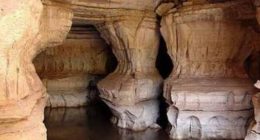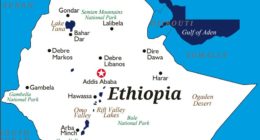Dine Sheik Hussein is located in the South Eastern part of Ethiopia. It is a 10th century Islamic centre of pilgrimage for people coming from different corners of the country, and Islamic communities of the Horn and the Middle East countries, twice a year. Dirre Sheik Hussein is a site of magnificent groups of buildings, monumental tombs and courts representing early medieval period of Islamic architecture and buildings of significant engineering qualities.
The Sheik
The holy site was founded by the Islamic Saint known as Sheik Nur Hussein. He was one of the Nine Islamic venerated saints who entered Ethiopia (from South Arabia) along the eastern route via the walled city of Harar, which was recently inscribed as the World Heritage site of Ethiopia. Within the compounds and courts of Dine Sheik Hussien there are huge and magnificent mosques, shrines, residential buildings, artificial water ponds and other cultural spaces of Islamic religious processions and diverse ritual practices.
Religious
The site is a large rural religious walled settlement still serving the living culture of the past that continuously occupied the Islamic community of this part of the region for nearly 1000 years. It has annual festive events of religious celebrations and cultural practices of thanks giving and blessing. Dirre Sheik Hussein is also considered as a sacred site with a large area of spiritually protected forest landscape. The maintained strong spiritual association and the powerful ritual meaning that are attached to the site have contributed a lot to the preservation of the surrounding environment.
Muda Iin
The whole setting is evidence of the process of the establishment of this permanent rural enclave religious settlement and the adaptation/introduction of the Islamic cultures to this remote hinterland of the Horn of Africa. Dine Sheik Hussein is a place where people exercise a mixture of Islamic religion and African traditional belief, known as Muda Iin this part of Africa.
Thus; the cultural property possesses outstanding universal value as a testimony of a unique cultural tradition representing the way in which human beings coexisted with nature over a long period of time in this specific geo cultural region of our planet.





